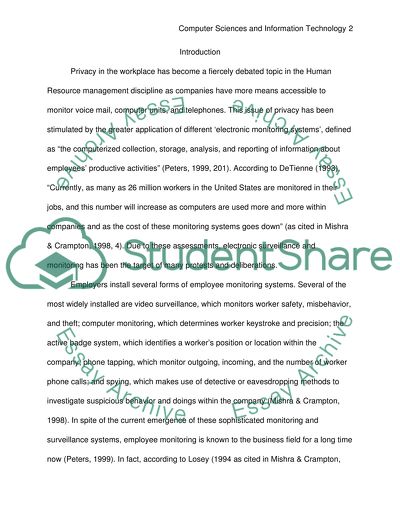Cite this document
(“Employee Privacy Rights: The Downside of Computer and Video Monitoring Research Paper”, n.d.)
Employee Privacy Rights: The Downside of Computer and Video Monitoring Research Paper. Retrieved from https://studentshare.org/information-technology/1437892-privacy-concerning-video-and-computer-monitoring
Employee Privacy Rights: The Downside of Computer and Video Monitoring Research Paper. Retrieved from https://studentshare.org/information-technology/1437892-privacy-concerning-video-and-computer-monitoring
(Employee Privacy Rights: The Downside of Computer and Video Monitoring Research Paper)
Employee Privacy Rights: The Downside of Computer and Video Monitoring Research Paper. https://studentshare.org/information-technology/1437892-privacy-concerning-video-and-computer-monitoring.
Employee Privacy Rights: The Downside of Computer and Video Monitoring Research Paper. https://studentshare.org/information-technology/1437892-privacy-concerning-video-and-computer-monitoring.
“Employee Privacy Rights: The Downside of Computer and Video Monitoring Research Paper”, n.d. https://studentshare.org/information-technology/1437892-privacy-concerning-video-and-computer-monitoring.


